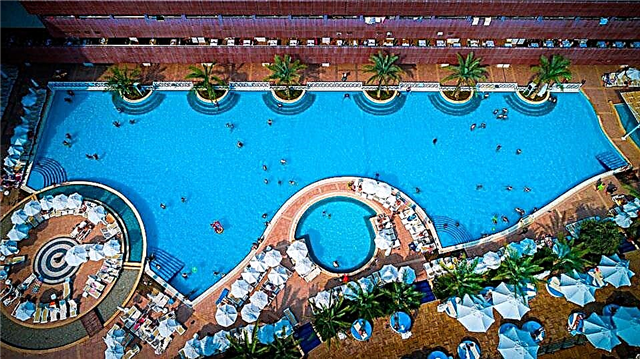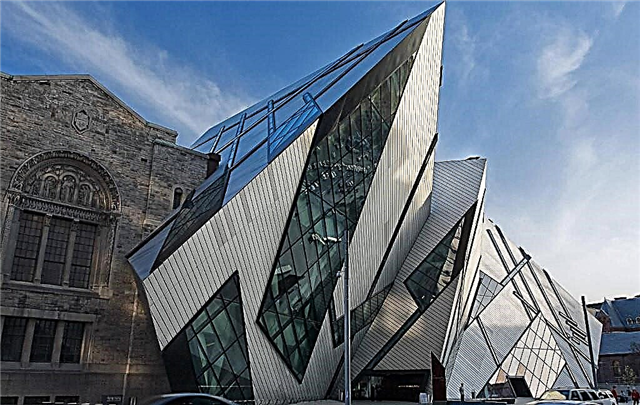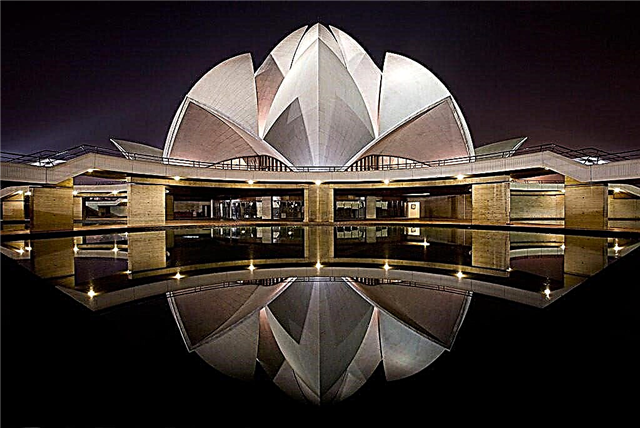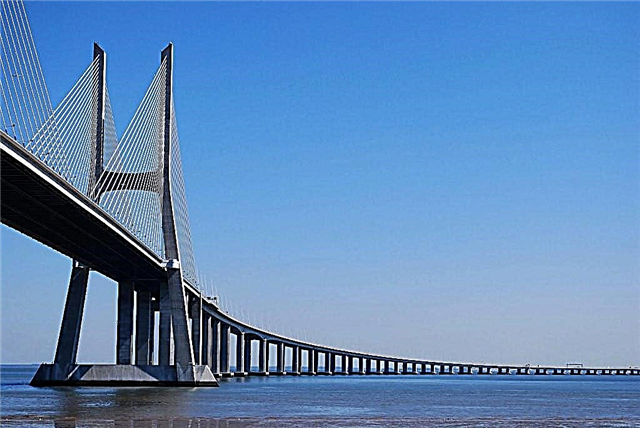On the bank of the small river Zaprudnya there was once a monastery, the history of which is connected with the appearance of one of the most revered Orthodox shrines - the Fedorov Icon of the Mother of God. The monastery was built in the dense Kostroma forests more than 800 years ago. Today, a beautiful white-walled temple remains in memory of her, in which different stages of the development of Kostroma architecture are reflected.
History of the Spaso-Zaprudnenskaya monastery
The Kostroma prince Vasily Yaroslavovich, who is the younger brother of Alexander Nevsky, had the nickname Mizinny, as he was the youngest in the family. According to an old legend, once an icon of the Mother of God was revealed to him in the forest. The prince solemnly transferred the miraculous image to the main cathedral of Kostroma, and ordered to found a monastery on the place where it was found. It happened in the middle of the XIII century. Therefore, historians believe that the created monastery was the first male monastery on the Kostroma land.

The monastery was small for a long time, and all its buildings were made of wood. The very first monastery church, built by Vasily Yaroslavovich, was dedicated to the Image of Jesus Christ Not Made by Hands. Only in 1754 the first stone church appeared here. And all the parishioners collected money for its construction. According to legend, the temple altar was erected on the site of a pine stump, where the Kostroma prince first saw the miraculous icon.
After 6 years, the Kostroma Theological Seminary was transferred to the territory of the monastery. With the arrival of seminarians, life in the monastery was transformed. For the needs of students and teachers, several wooden buildings and a beautiful Vvedenskaya church were built. And the first floor of the stone church was given for classroom studies and a library.

However, soon (1764) the monastery was abolished, and the seminary began to use all the monastery buildings. It existed in the monastery for just over half a century - until the fire that broke out in the winter of 1813. The fire destroyed the educational building made of wood, and the seminarians were forced to transfer to the Epiphany Monastery.
During its existence in Zaprudna, the seminary left a noticeable mark and graduated many educated clergymen, and among them - Mikhail Diev, who became the largest church historian of the Kostroma region, and Fyodor Golubinsky, who subsequently took the post of professor of the Theological Academy in the capital. The fate of the priests of their Ostrovsky family is also closely intertwined with the seminary. It was completed by the grandfather of the famous Russian writer A.N. Ostrovsky, the author of the tale of the Snow Maiden.

The history of the temple after the closure of the monastery
After the abolition of the monastery, the Zaprudnenskaya Church became a parish church. In 1806, with the money allocated by the local merchant of the first guild, Vasily Ivanovich Strigalev, a one-story refectory with rounded corners and a two-tiered bell tower were attached to it. Since the middle of the 19th century, the quiet and measured life of the city outskirts has changed. Kostroma, like other Russian cities, was swept by the industrial revolution. In the vicinity of the temple, where cattle were grazed recently, they began to build factory buildings. And the neighboring settlements were inhabited by peasants arriving to earn money, who replenished the number of parishioners.
Until the end of the 19th century and at the beginning of the 20th century, this church was considered the center of Christian life in Kostroma. Under her there was a school for women, for four years of study in which Kostroma residents were trained in crafts and needlework that were in demand at that time. Every year, on August 16, a crowded procession came to the temple from the Assumption Cathedral, celebrating the feast of the miraculous image of the Fedorov Mother of God.

At the end of the 19th and beginning of the 20th centuries, significant alterations were made in the church building. Most of its windows were hewn, part of the decor of the window openings on the second floor was changed, and a porch was added to the bell tower from the west. In addition, the old wooden Vvedensky temple was dismantled due to its dilapidation.
The cemetery at the church became the burial place of the most famous Kostroma residents - two governors-general, family members of wealthy merchant families and famous Kostroma manufacturers. The merchants Durygins, Kashins, Solodovnikovs, Strigalevs, Zotovs and Mikhins were buried here, many of whom donated many times during their lifetime for church needs. According to his will, the founder of the Big Linen Manufactory N.K. Kashin, the founder of the flax spinning Mikhinsky factory I.S. Mikhin and the owners of the flax-spinning production of the "Partnership of the Zotov brothers" A.A. Zotov and V.A. Zotov. The latter have been the main trustees of the church since the late 19th century.

After the revolutionary events that took place in 1917, the Zaprudnensky temple remained in operation. However, the authorities did not allow any more religious processions. Twice the regional party newspaper informed the residents that the church had been liquidated. The bells were removed from it, and many of the gravestones on the churchyard were destroyed. But it so happened that Zaprudnensky temple became one of three in Kostroma, which during the years of Soviet power were not so closed, and services here were not interrupted even during the active struggle of the state with religion. And since 1990, the annual tradition of the procession has been renewed.
Architectural features and interior decoration of the Church of the Savior-Zaprudnenskaya

The two-story one-domed church was built on the monastery grounds in the middle of the 18th century. And the chapel, standing from it to the east, according to experts, dates back to the second quarter of the 19th century. Since the middle of the 19th century, the temple territory has been surrounded by a fence, in which there are the Holy Gates and four corner turrets on the west side. The fence on the church site has a rectangular shape and a rounded wall from the east.
From a distance it is noticeable that the main building of the temple is distinguished by its stylistic diversity. This was the result of alterations and restorations carried out over a long period of time. The temple "octagon on a quadruple" is made in the Naryshkin Baroque style, and a later building - the bell tower was erected in the traditions of classicism. In addition, the church facades of the lower part of the church and the refectory were endowed with eclectic features during alteration.

It is noteworthy that inside the lower part of the temple has a very unusual structure. The capital wall divides the spaces for worshipers and the altar apse into unequal parts in width. And the northern and southern aisles formed by such a layout have box-like vaults. A single-flight staircase leads to the second floor of the church.
The interior decor, like the temple itself, is very diverse in style, since the decoration of the premises was done at different times. The wall paintings on the second floor and the refectory were carried out in oil paints in the middle of the 19th century and were later renovated many times. The artists who made them worked in the manner of academic writing and painted frescoes on an iconographic basis.

The main iconostasis resembles the silhouette of a three-domed church in shape. Its base is blue, and the decor elements are gilded. The iconostasis was carved by Kostroma craftsmen at the end of the 19th century. The icons painted for him are also dated at the same time. Only the "Savior Not Made by Hands" has an earlier letter and moved to the stone church from the ancient wooden church - the very first monastery building.
Current state and visiting regime
Spaso-Zaprudnenskaya Church - active. Its whitewashed building looks very picturesque on the high bank of the Zaprudnya and is a historical and cultural monument of federal significance. Services are held here at 8.00 and 17.00. The church has a Sunday school and a library for parishioners.

The temple has five chapels and celebrates several patronal holidays: January 25, February 24, July 28, August 29, September 8 and October 20.The main church throne is dedicated to the Image of the Lord Jesus Christ not made by hands Particularly revered shrines of this church are the miraculous icon of the Savior Not Made by Hands, the burial place of blessed Daryushka, as well as particles of the relics of Christian saints. Every year on August 29, many pilgrims come here for a big holiday dedicated to the miraculous icon of the Fedorov Mother of God, and a big procession takes place.
How to get to the Spaso-Zaprudnenskaya Church
The temple is located in Kostroma, on the street. Zaprudnya, 2.
By car. The road from the capital to Kostroma takes 4.5-5 hours (346 km) and runs along the Yaroslavl highway and the M8 highway (Kholmogory). In Kostroma, cross the road bridge to the left bank of the Volga. The temple is located in the northwestern part of Kostroma. And after the Volzhsky bridge, the path to it lies along the streets of Podlipayev, Ivan Susanin, Kalinovskaya and Rabochy Prospekt.

By train or bus. From the Yaroslavsky railway station to Moscow trains reach Kostroma in 6.04-6.35 hours. In addition, from the Central Bus Station of the capital, located near the Shchelkovskaya metro station, you can get to Kostroma by regular buses (7 trips a day). This journey takes 6.50 hours. The Kostroma bus station is 1 km away from the railway station. City buses and minibuses No. 1, 2, 23, 47, 50, 55, 58, 66, 83 go to the church. You need to go to the stop “Factory of the October Revolution”.
Attraction rating:











